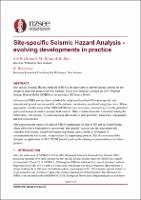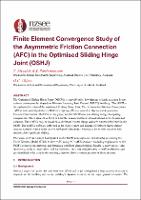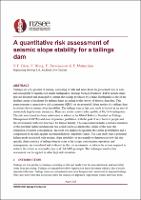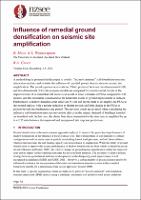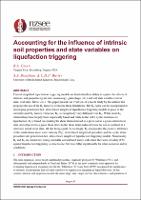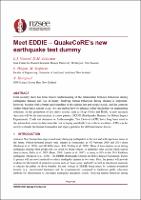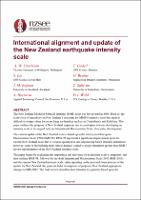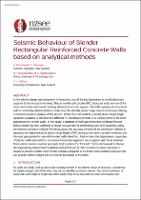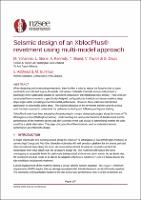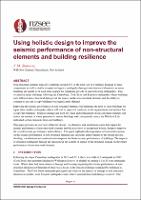Search
Now showing items 1-10 of 107
Site-specific seismic hazard analysis - evolving developments in practice
(New Zealand Society for Earthquake Engineering, 2023-04-19)
Site-specific hazard analyses (SSHAs) are undertaken to inform seismic actions for the design of important projects in New Zealand. These have typically adopted the 2010 National Seismic Hazard Model (NSHM) as the reference ...
Finite Element Convergence Study of the Asymmetric Friction Connection (AFC) in the Optimised Sliding Hinge Joint (OSHJ)
(New Zealand Society for Earthquake Engineering, 2023-04-19)
The Optimised Sliding Hinge Joint (OSHJ) is a cost-effective, low damage seismic resisting beam-column connection developed for Moment Resisting Steel Framed (MRSF) buildings. The OSHJ is the optimised version of the ...
A quantitative risk assessment of seismic slope stability for a tailings dam
(New Zealand Society for Earthquake Engineering, 2023-04-19)
Tailings are a by-product of mining, consisting of silts and sands from the processed rock or soils and susceptible to liquefaction under earthquakes. Tailings Storage Facilities (TSFs) include dams that are designed and ...
Influence of remedial ground densification on seismic site amplification
(New Zealand Society for Earthquake Engineering, 2023-04-19)
While the capability of remedial ground densification techniques to mitigate the adverse effects of liquefaction has been widely investigated in recent decades, the characterization of ground motion amplification in the ...
Accounting for the Influence of Intrinsic Soil Properties and State Variables on Liquefaction Triggering
(New Zealand Society for Earthquake Engineering, 2023-04-19)
Current simplified liquefaction triggering procedures are limited in their ability to capture the effects of intrinsic properties (grain size, mineralogy, grain shape, etc.) and the state properties (stress state, void ...
Meet EDDIE – QuakeCoRE’s new earthquake test dummy
(New Zealand Society for Earthquake Engineering, 2023-04-19)
Until recently there has been limited understanding of the relationship between behaviour during earthquake shaking and risk of injury. Studying human behaviour during shaking is important, however, because with a better ...
International alignment and update of the New Zealand earthquake intensity scale
(New Zealand Society for Earthquake Engineering, 2023-04-19)
The New Zealand Modified Mercalli intensity (MMI) scale was last revised in 2008. Even so, the scale's lack of specificity on New Zealand's structures for MMI>8 intensity levels has made it difficult to assign values for ...
Seismic Behaviour of Slender Rectangular Reinforced Concrete Walls based on analytical methods
(New Zealand Society for Earthquake Engineering, 2023-04-19)
In the seismic design and assessment of structures, one of the key parameters is the displacement capacity of the structural elements. Slender reinforced concrete (RC) structural walls are one of the more commonly used ...
Seismic design of an XblocPlus® revetment using multi-model approach
(New Zealand Society for Earthquake Engineering, 2023-04-19)
When designing and constructing revetments, there is often a drive to reduce the footprint due to space constraints and a limited supply of suitable rock armour materials. Concrete armour units present a potentially more ...
Using holistic design to improve the seismic performance of non-structural elements and building resilience
(New Zealand Society for Earthquake Engineering, 2023-04-19)
Non-structural elements typically contribute around 80% of the total cost of a building. Damage to these components as well as works to repair and replace earthquake damaged non-structural elements can mean buildings are ...

